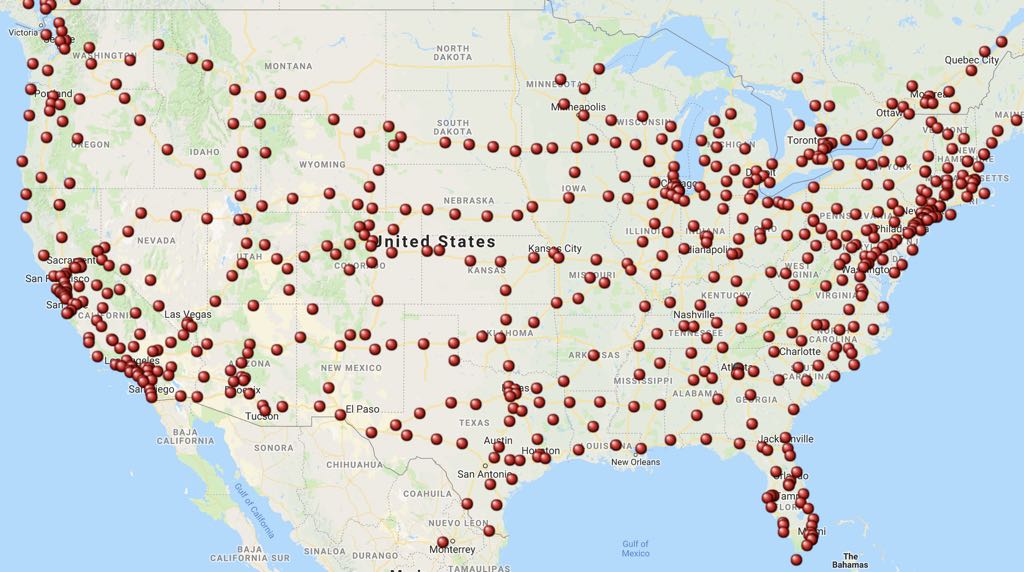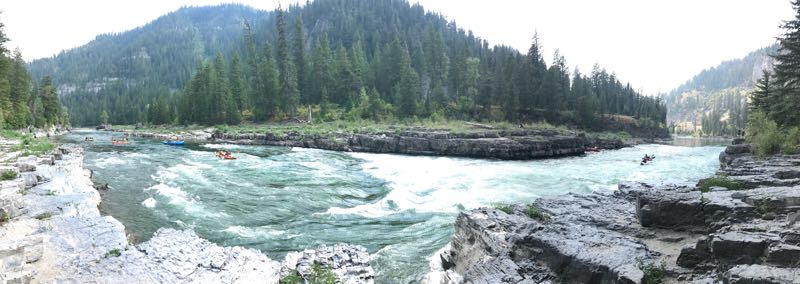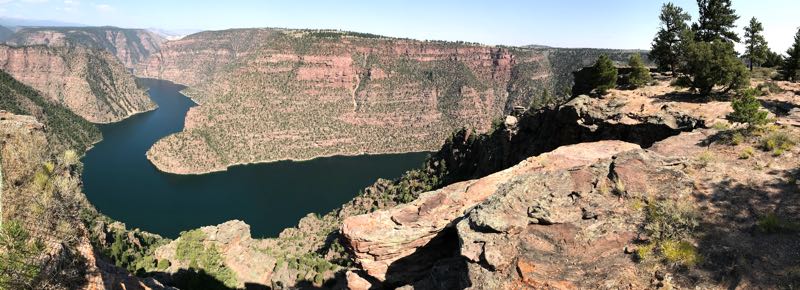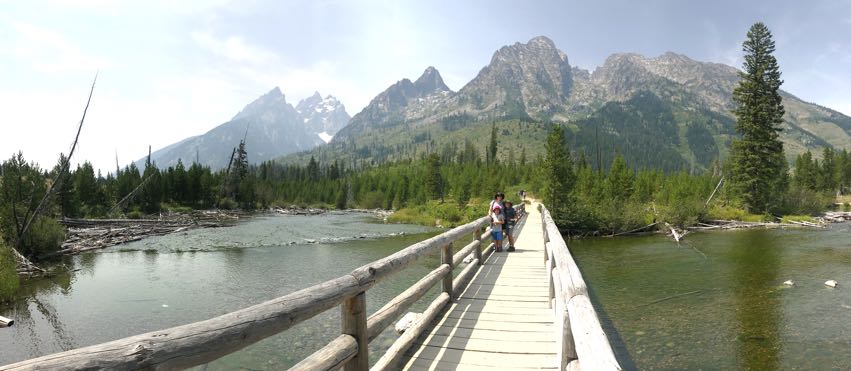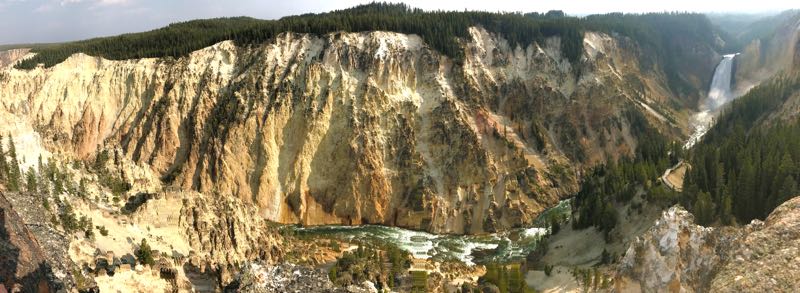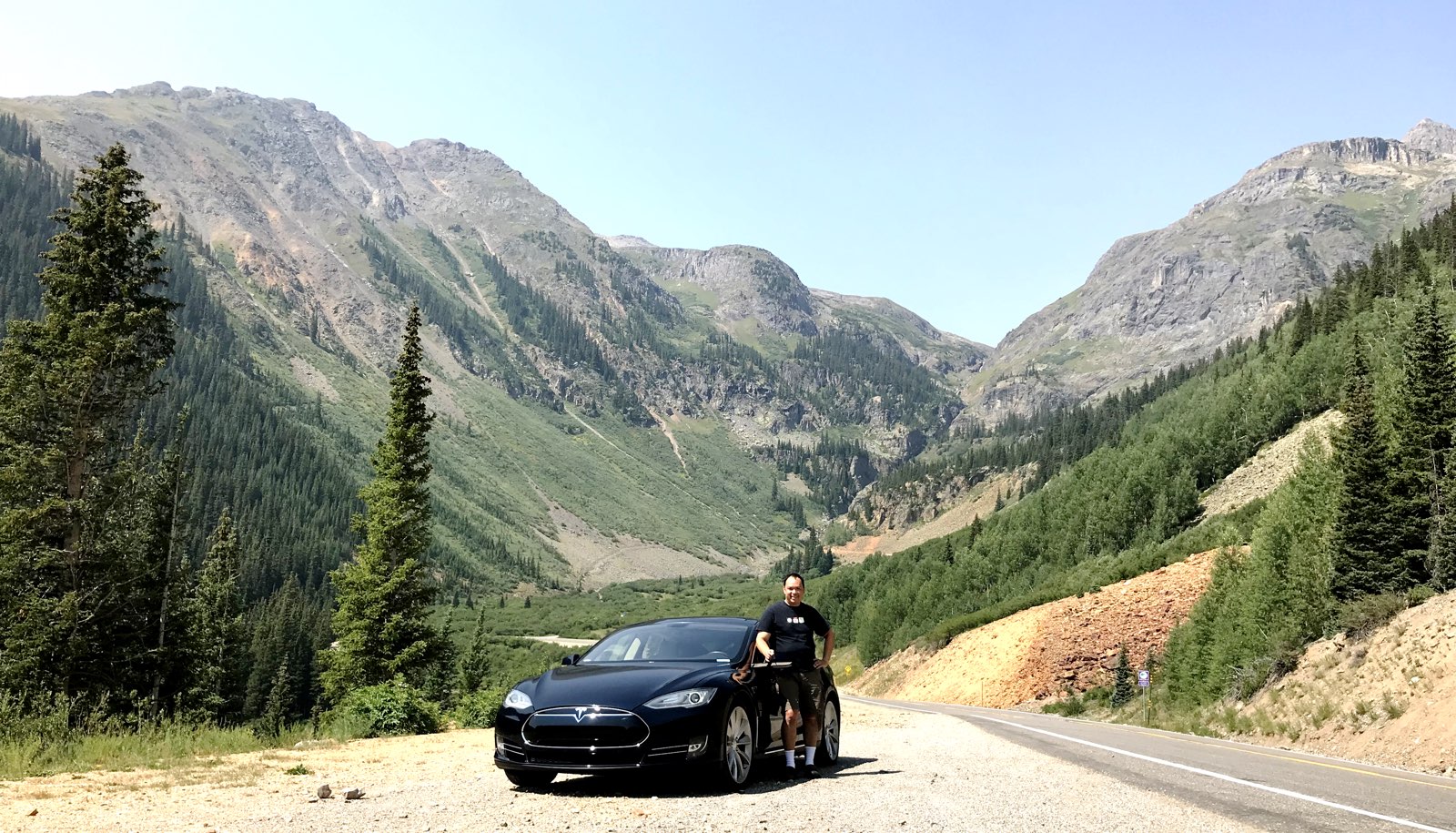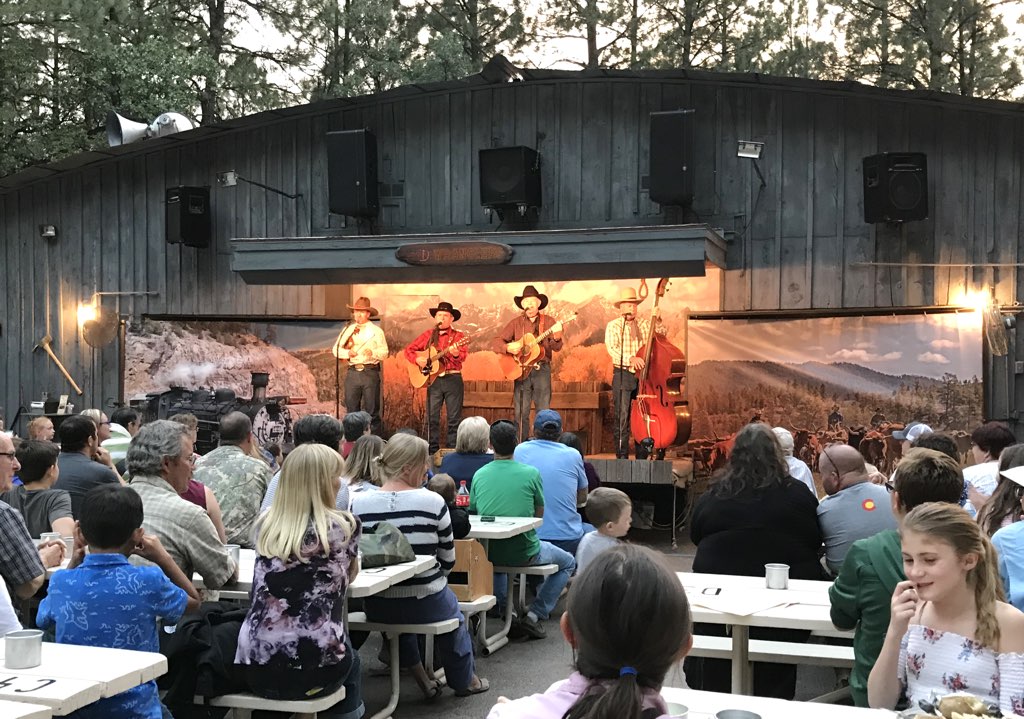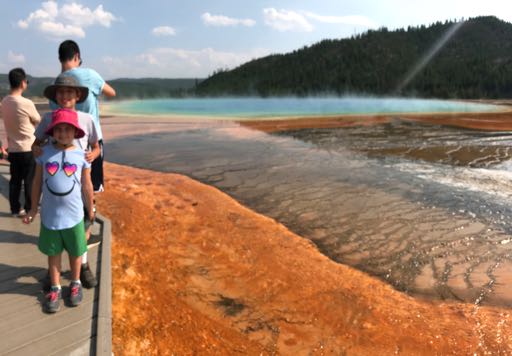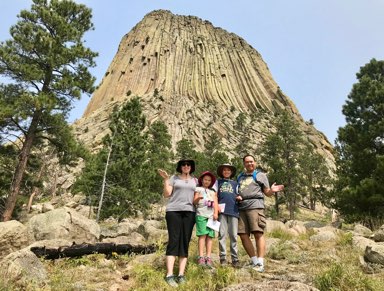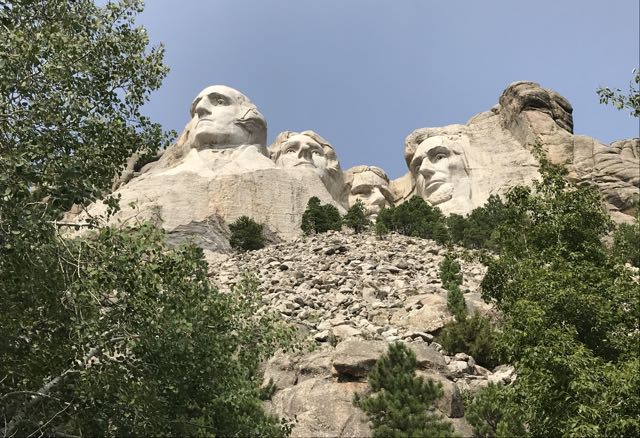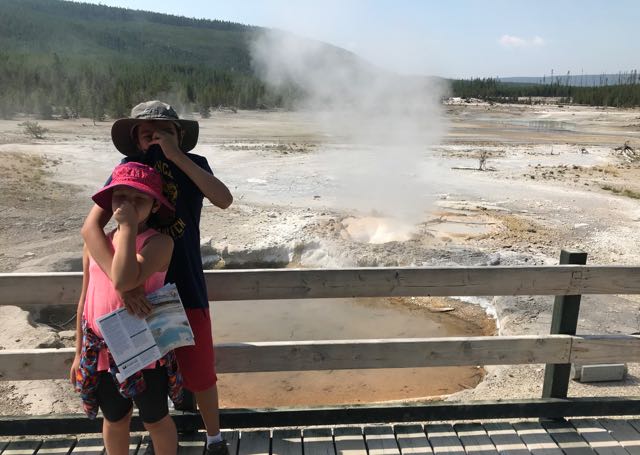|
This was easily the longest road trip to date in any car I've driven.
By the end I shot over 2600 pictures and videos (iPhone 7) and
logged details about the
driving and charging my Model S (right).
This is a real family trip; no film crew or a support caravan.
Our family of four and all of our luggage fit solely in
one Model S.
No sprained ankles and no car accidents occurred.
The only time we needed band-aids was when
I scratched up my knees on the
hike around Jenny Lake in Grand Teton.
| Odometer |
|---|
| Ending | 85863 |
| Beginning | 81216 |
| Traveled | 4647 miles! |
|---|
|
|
|
|
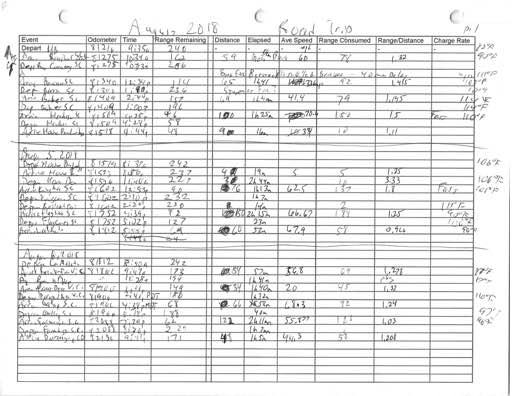
Page 1 of the 5-page Log
|
| States Visited |
|---|
| Nevada |
| Arizona |
| New Mexico |
| Colorado |
| Utah |
| Wyoming |
| Idaho |
| Montana |
| South Dakota |
| Nebraska |
|
|
|
Conclusion
This trip went great!
My wife volunteered this time to drive a few easy segments, such as the simple routes on an Interstate between Superchargers,
leaving me to drive my Model S for all but a few legs of this 4647-mile road trip visiting ten western states.
We were in a different environment pretty much every day.
In science repeatability of the experiment is vital, and this trip shows clearly the success of
our 2824-mile road trip was no fluke.

Repeatability: Electrically-powered visit to Arizona
two years earlier in summer,
six months earlier in winter, and
on
this trip in summer.
The evidence posted on these pages, documenting 10,767 miles of all-electric road trips to date,
plainly proves a properly-deployed all-electric solution is enough to obviate carrying along a combustion engine.
I can definitely reiterate that the Model S is a fabulous road trip car.
|
I am glad to be free of extra engine and transmission noise of internal combustion engines and the
low-frequency rumble and roar shaking one's innards.
I am therefore free of the fatigue of gas cars,
leaving our family a relaxing driving experience.
That's actually an electric-car "hidden feature":
several times while I was driving,
my three other family members fell asleep during the drive.
While they slept,
I was perfectly happy to enjoy driving through
the beautiful scenery in silence plus
the classical music streaming to the car from my iPhone. What serenity!
|
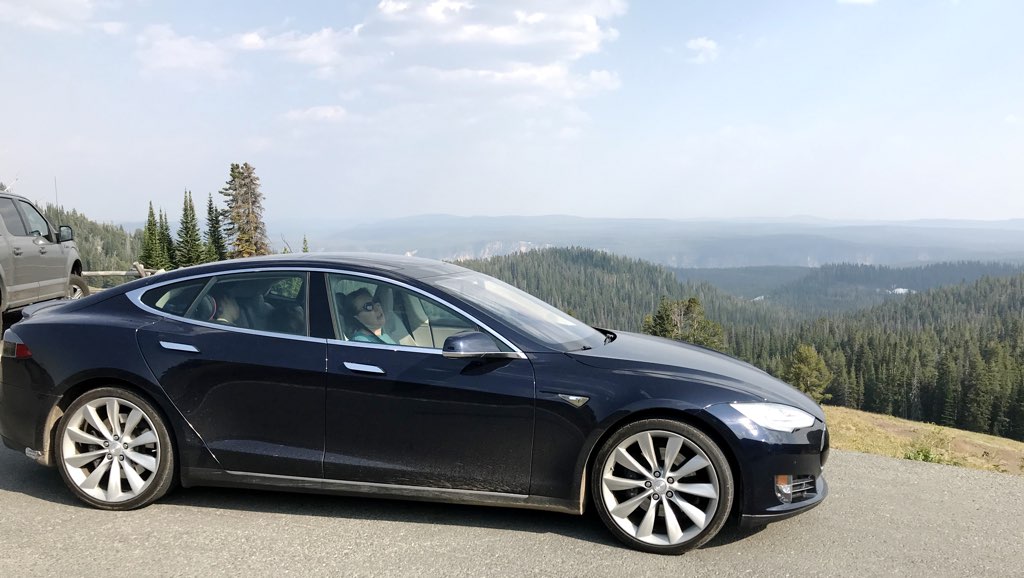
Zoom in. How many sleepy heads can you see?
|
I did my best to heed the lesson from the
road trip two years ago:
Take more time at the stops along the way.
I did allocate more time, intentionally slowing the pace
(multiple nights in a location, more hours allocated at a point of interest, more cushion at the end of the day)
so we would take more time,
but we had hard constraints for the
beginning, end, and the pickup point in northern Utah at the 7th day.
The only remaining solution to spend more time where we visited is eliminate a point of interest.
Many people I talk to still don't seem to get how family road trips are supposed to work.
If you're looking for a race, you're completely missing the point.
So I'll again paraphrase the movie Cars:
Our trip was not about making great time. We drove to have a great time.
Let me explain:
Charging
|
The most common question I am asked, both before and during this trip is:
| "Where do you find places to charge?"
|
asked incredulously, as if they have no idea any chargers even exist.
|
|
"Oh my goodness! Where have you been?", I think to myself.
"Didn't you read my website about my last trip?"
Do they think I gave up the freedom to drive out of town?
Let's break down this answer:
|
|
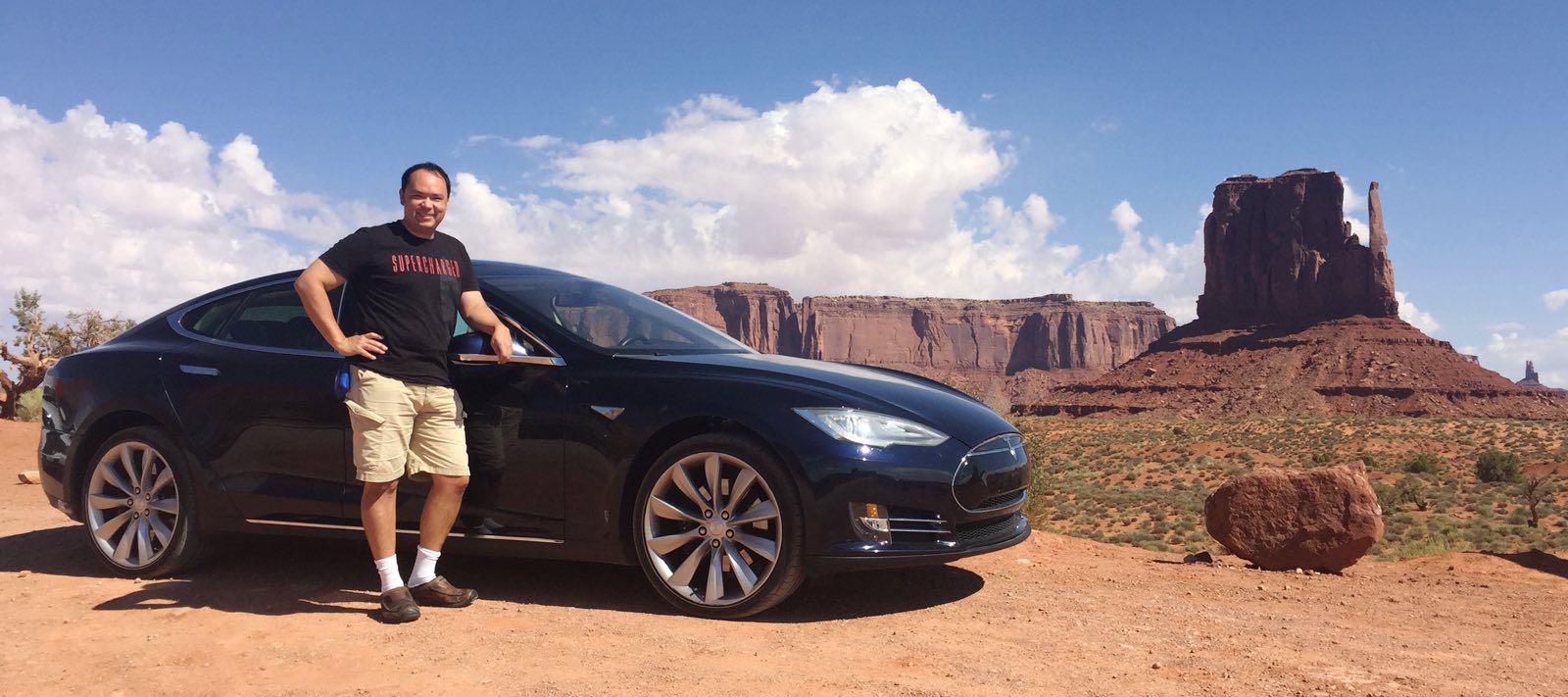
If electric cars can't go anywhere, how did I get here?
|
-
They're in the car!
Every Tesla Model S and X and 3 displays thousands of charging locations using the big touch screen.
The in-car navigation will calculate a route that, if necessary, automatically includes Superchargers.
Anyone can try out Tesla's Trip Planner for a preview.
- The Superchargers are on the web!
- The Destination Chargers are on the web!
|
The Tesla Destination Network
includes thousands of hotels that, because they understand the needs of Tesla owners,
provide Tesla-native stalls for overnight charging
just like I do at home.
As you see on this trip, this Network is
the perfect compliment to the Supercharger network
to make all-electric road trips possible and fun.
Like how the importance of a reliable fast-charging network is underestimated,
the value of the Destination network is underappreciated too.
On this trip I drove two long segments without Superchargers, proving speed isn't everything:
566 miles and 4 days between
Farmington, New Mexico, and
Rock Springs, Wyoming
and
758 miles and 4 days between
Idaho Falls, Idaho, and
Sheridan, Wyoming.
|
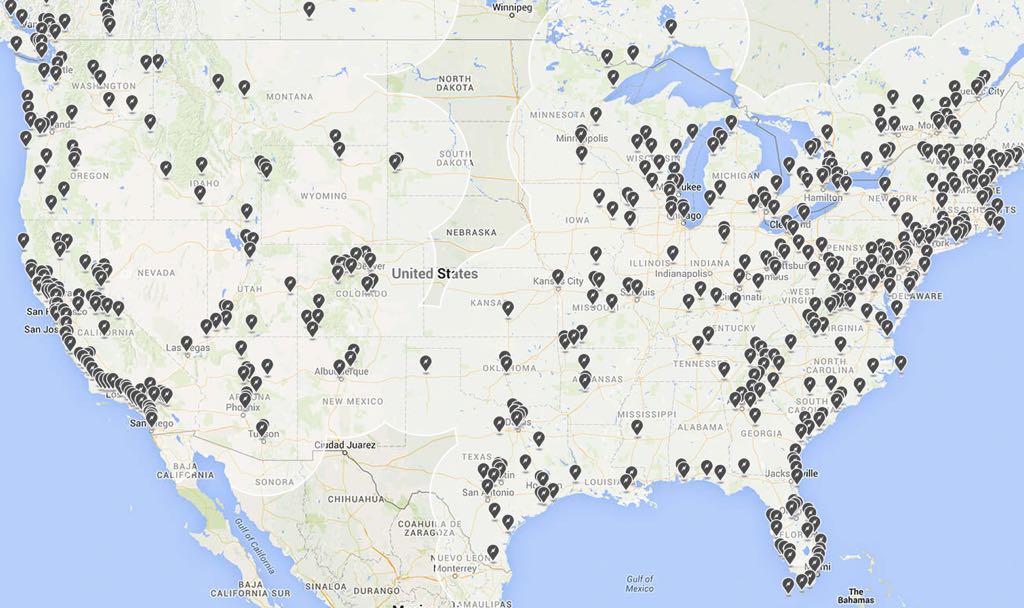
|
These lists are growing every day.
We take WiFi for granted in hotels today, but 15 years ago
WiFi for hotel guests was the newest forward-thinking amenity.
These proprietors are wising up about EV charging too for the same reason: a new way to attract customers.
- Thousands of other chargers are on the web!
I used PlugShare to fill every last gap in charging I needed,
and these networks are growing.
|
After driving 10,767 miles of long road trips for over five years
(946
+ 450
+ 334
+ 635
+ 2824
+ 931
+ 4647 miles),
I don't get how these other people don't know this already.
I really don't.
Successful and repeated use of these networks
has been my living reality for five years!
Just read my travel logs.
And I'm not the only one travelling on electricity out there, proven by the pictures on PlugShare and beyond.
How do the above facts remain so secret when they are all easily Googled?
Their question pushes me to post on this site so many pictures of my car in distinctive far-flung locations.
These pictures expose the cognitive dissonance of the (unconscious?) belief electric cars can't go anywhere
and how I take my family in this car on adventures.
If there aren't any places to charge out there, how could my car be seen in these places?
|
|
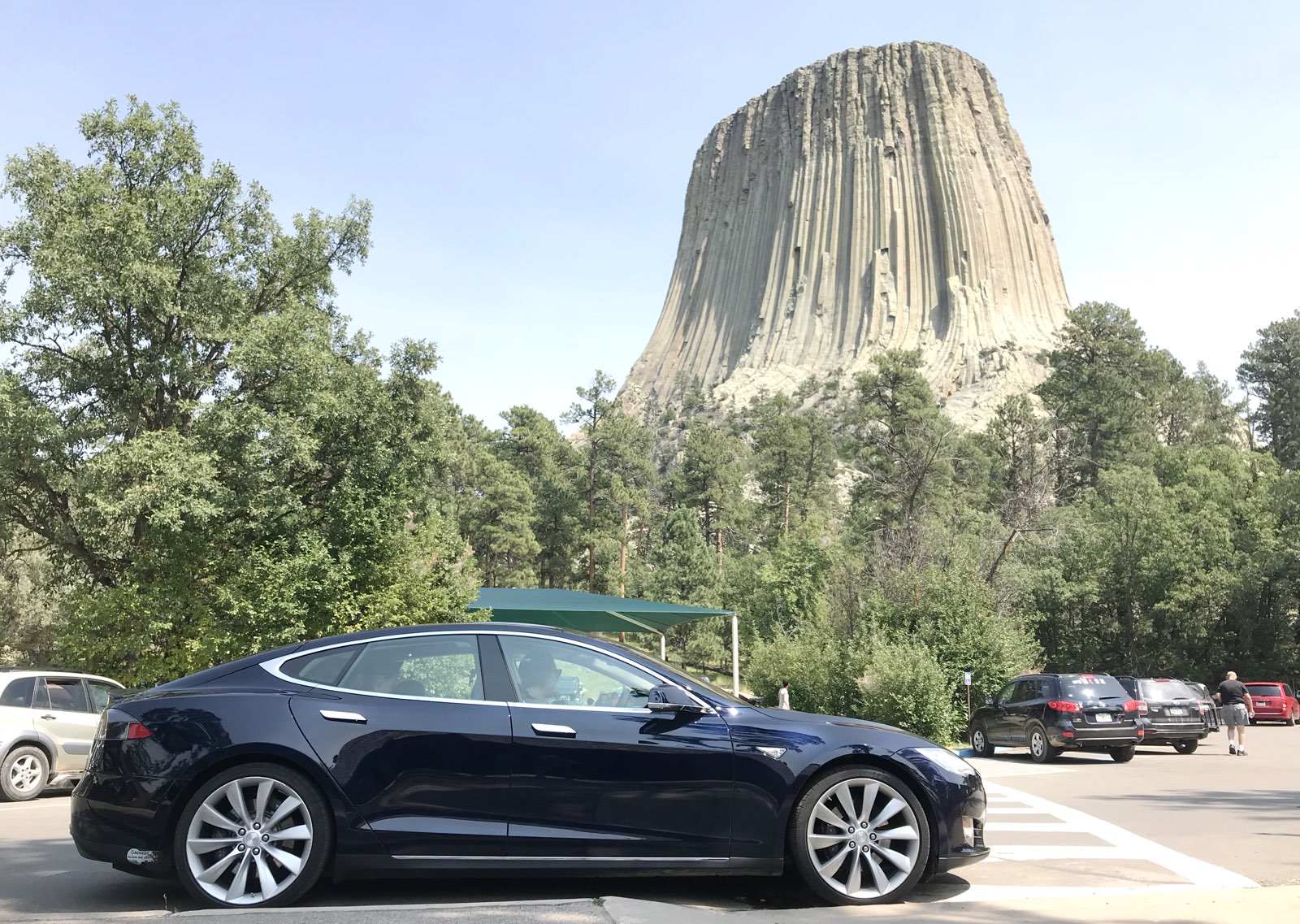
If electric cars can't leave home, how did I get here?
|
Dear reader, you know these trips are possible and fun, so I invite you to share this site with
anyone who doesn't know the above facts.
Bathroom Anxiety
|
A reality a surprising number of people forget when discussing travel is that humans,
especially little humans, have physiological limits.
They have to go use the facilities regularly.
This fact must be kept in mind when planning or executing a family road trip.
I am astonished I have to point this out.
In several instances on this trip
and on our other trips,
the car had enough range to make it, but the physiological limitations of the humans
demanded a stop first.
Bathroom Anxiety occurred regularly, obviating concerns about charging.
|
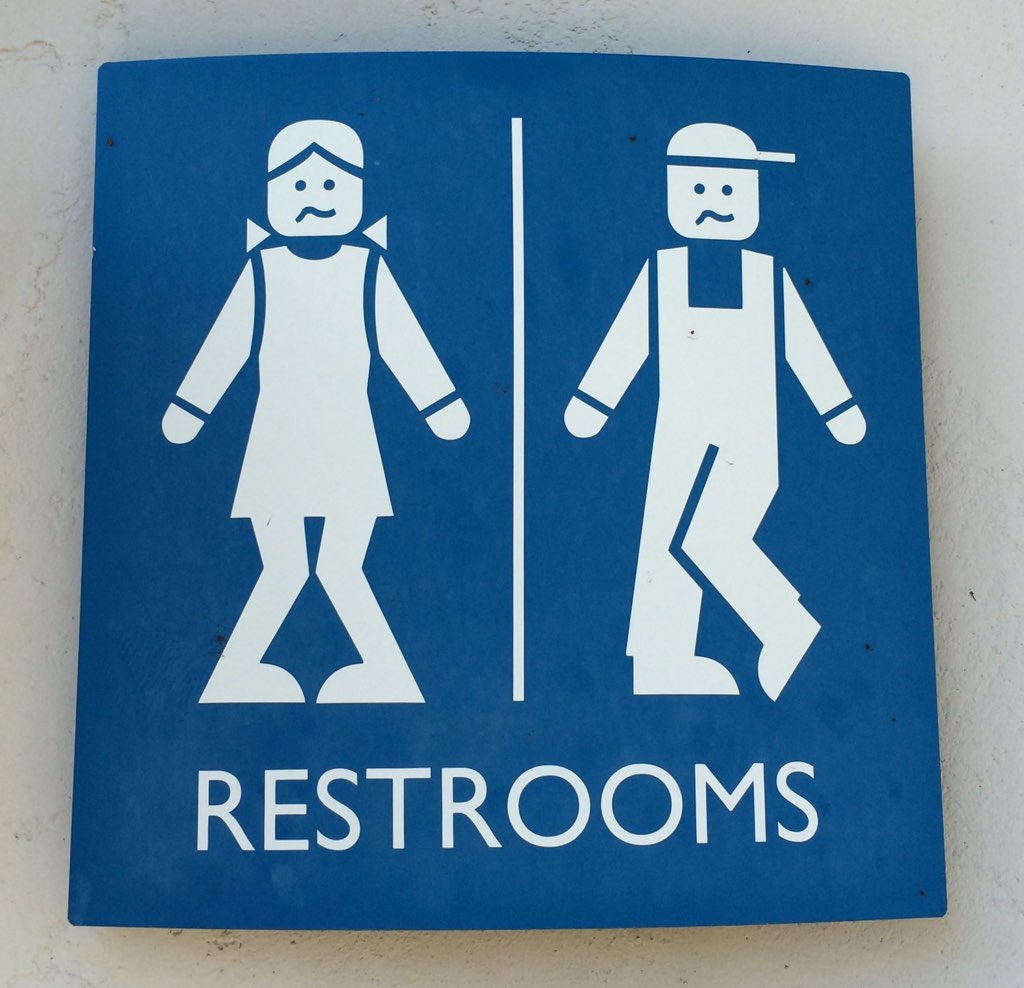
|
Bathroom Anxiety:
worry on the part of a person riding in a car that their bladder or bowels will be unable to hold its
accumulating contents
before the destination or a suitable location to relieve oneself is reached.
|
| |
That tells us that the car only has to go as far, and charge as fast, as necessary
to accomodate those human physiological needs.
Longer range and faster charging than what I am using is interesting but
the practical need (because humans' bladders and bowels are not evolving bigger)
to advance beyond what Tesla has accomplished is at best unclear.
Despite the fact I'm using Tesla technology first deployed in 2012 and has since improved upon,
these 10,767 miles of road trips prove that this all-electric mobility solution used properly
(any and I mean any tool can be misused, so misuse is automatically disqualified when proving capability)
does indeed
accomodate those human needs; repeatedly the humans were the bottleneck to travel,
not this technology.
It works!
|
Why Take the Children on Trips?
This trip proves I meant it when
I wrote before that the 12-day trip two years ago was only the beginning.
This time, like the last, I wanted to spend time with my children showing them amazing wonders in our country.
Some might question this idea particularly if the child has no context about what they are seeing.
Two years ago we visited
Mesa Verde National Park, including Cliff Palace.
At the time the children knew little about the context other than what our guide said about the Ancient Puebloans
and the places we toured.
|
In the school year following the trip,
my son took classes about the long history of native peoples of America.
In his history book he recognized a picture of Cliff Palace,
the same place he visited, except this picture was shot in black and white many decades before his visit.
He pointed out to his classmates how he actually visited that place in the picture.
|
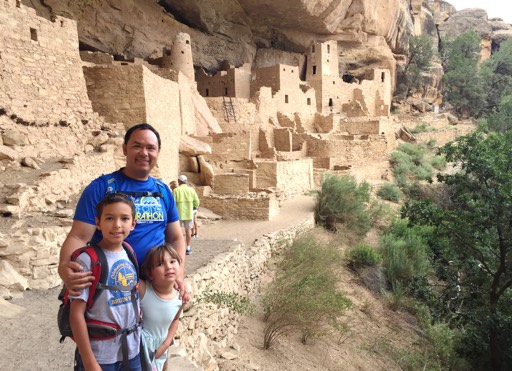
Our Family at Cliff Palace, 2016
|
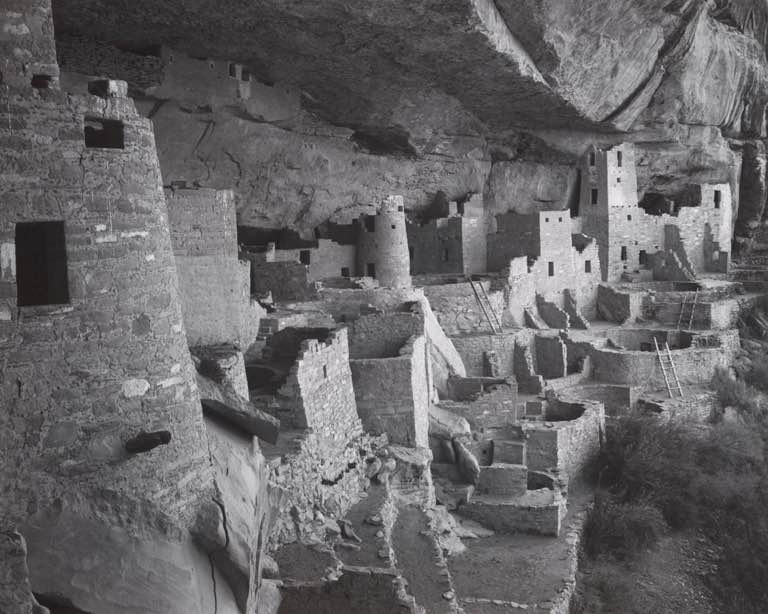
Cliff Palace, shot by Ansel Adams, 1942
|
My son could then place what he remembered from his visit to Mesa Verde in the context set by
his class at school, which helps him learn
because the subject becomes far more real to him.
After our trip, my son made connections to memories in his mind of when
he visited these unique and beautiful places.
|
A Symbol of Freedom
The automobile has for decades been a symbol of freedom, in the United States if not beyond.
This idea starts as a desire for personal mobility,
the ability of an individual to travel when and where they want to travel.
In the United States our current vision of what that means here started when the
Interstate Highway
System was built under the Highway Act enacted during the Eisenhower administration,
inspired by his experience in the Transcontinental Motor Convoy in 1919 and
his observations of the German autobahn while serving in World War II.
Ever since the automobile industry leveraged growing roadways like the Interstate system to
pitch the automobile as an expression of American freedom to the public,
(at least) one car for every household.
The symbol was not about being able to drive to the corner gas station.
It wasn't about driving between the city and the (then-new) suburbs.
It wasn't about driving your daily commute.
|
It was about being able to see the great outdoors,
to see landmarks and sights or visit family and friends
strewn across States and the entire country.
(As of the date of the Highway Act, the US had only the 48 contiguous states.)
Even the American Automobile Association had a hand in
celebrating that kind of freedom the automobile brought US citizens.
Car sales in the United States have been set in that context ever since.
(Think about how many car ads place the car driving through far away picturesque landscapes.)
|
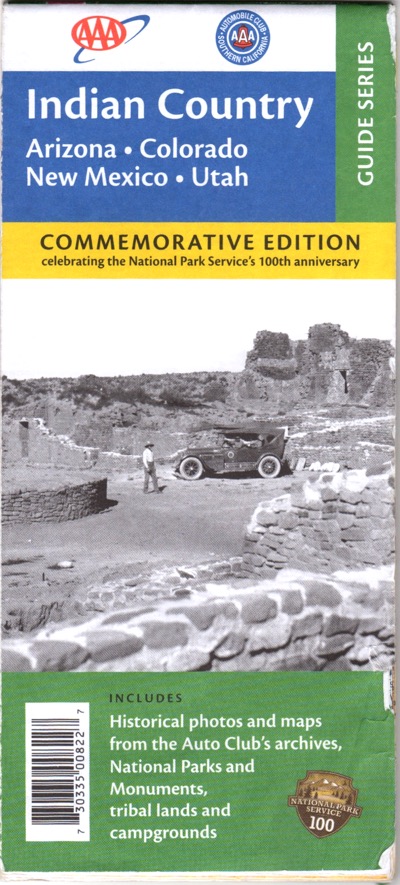
|
|
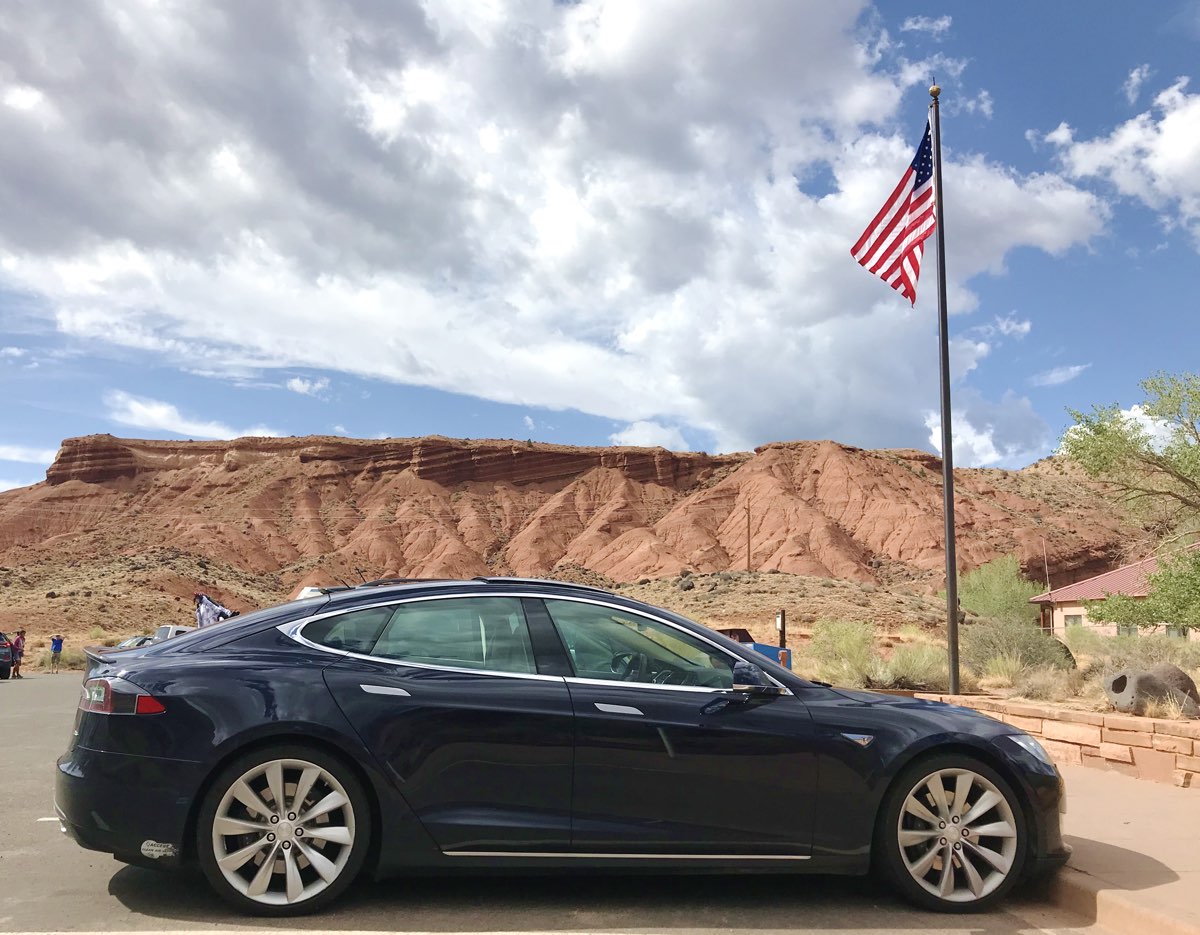
In publishing my account of my travels to see great landmarks and sights in our country,
I am celebrating, like those of yesteryear,
the freedom this American-designed and built 21st-century personal-mobility solution provides.
It wasn't wrong to celebrate American ingenuity in the 1950s, nor is it wrong to celebrate
American ingenuity in the 21st century.
|
That context makes it clear that, in order for the public to accept and adopt a new generation of personal transport,
that transport must necessarily fulfill that vision of freedom.
It doesn't matter if the statistics show that the vast majority of driving is done within 50 miles of home.
The public expectation of the freedom to drive anywhere in these 48 contiguous States
must be satisfied by the new method of personal transport in order for it to replace the old.
|
When something old is replaced, it never disappears entirely.
It is valued for its historical significance or the nostalgia it evokes,
and so is preserved in some form,
on display in an exhibit
or
reenacted as a public attraction.
|
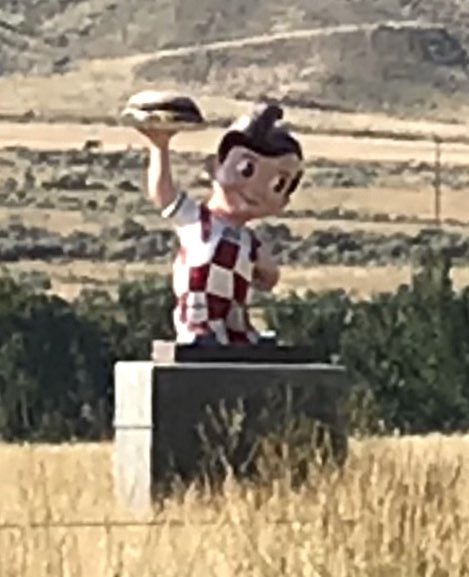
Relic of the Past
|
|
Antiquated Forms of Personal Transport
|
|---|
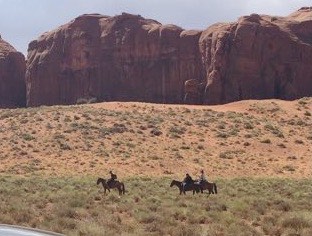
Horseback Riding
|
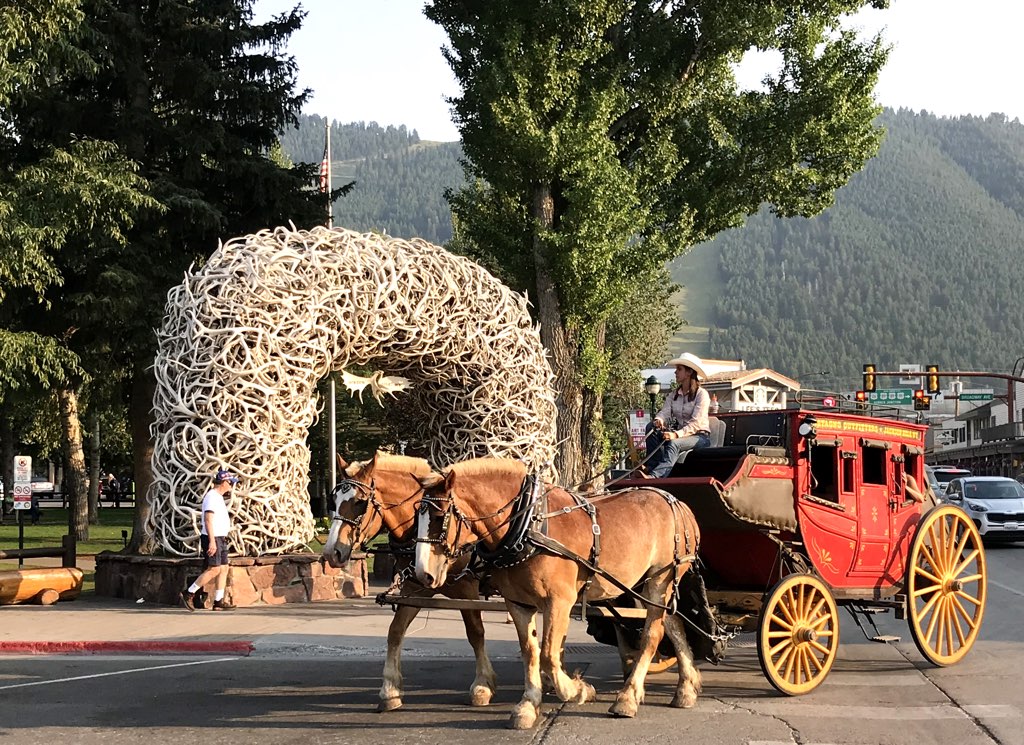
Horse and Carriage
|

Steam Engine
|
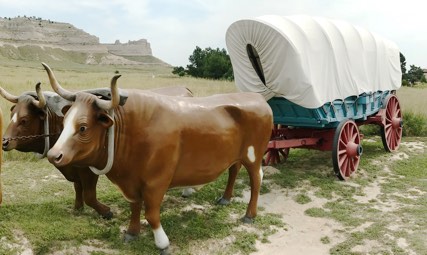
Covered Wagon
|
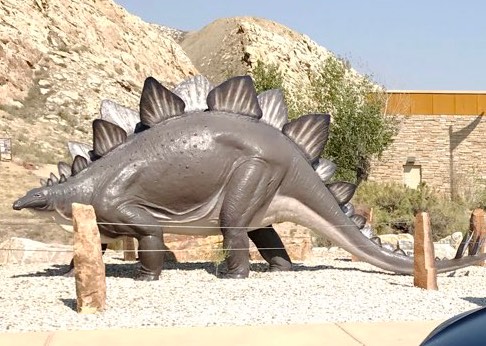
Dinosaur ("Yabba-Dabba Do!")
|
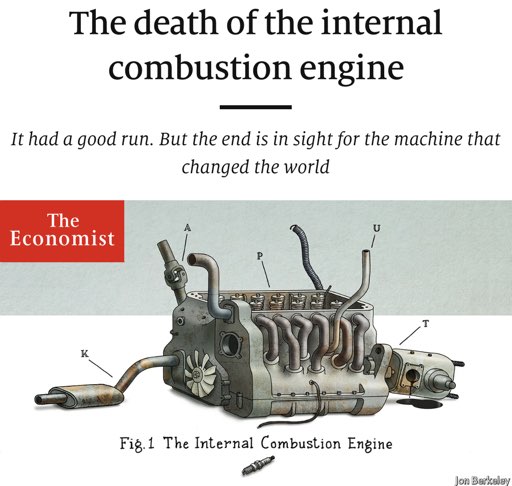
Internal Combustion Engine-powered Cars
|
Tesla's solution to personal transport clearly satisfies the above requirement,
as evidenced in the 10,767 miles and five years of all-electric road trips I personally documented for the public to see here
(946
+ 450
+ 334
+ 635
+ 2824
+ 931
+ 4647 miles),
besides the scores of other examples online.
It also gives additional freedoms:
freedom from gas stations, oil changes, belt changes, and unnecessary noises, shaking, rumbles, and smells.
(American society migrating to all-electric transport and renewable energy would also
give the US, for all practical purposes,
complete
energy independence.
In the interest of national security, that is freedom worth fighting for.)
Again, how do these facts remain secret when all the evidence is easily Googled?
Starting in September 2012, Tesla is the still the sole provider of a properly-designed all-electric mobility solution
(long-range EVs + Supercharging + Destination Charging)
that serves as a complete replacement for its internal-combustion predecessor.
Even though I predicted the incumbents would move as slowly as they could,
I still find it
astonishing, that in 2018, all other carmakers have failed to provide the complete solution
after six years of the existence of Tesla's solution.
Epilogue
As I wrote two years ago, the only remaining practical question about
electrically-powered mobility is deployment:
how many qualifying EVs can we make and how much infrastructure is enough.
Looking at the links above to see the hundreds of Supercharger stalls
and thousands of Destination Charging hotels across the country, we are well on our way to building the
infrastructure.
Add that enterprising businesses, remembering how WiFi 15 years ago attracted customers,
are wising up to attract patronage from EV drivers, even
in rural areas like
Lusk,
Vernal,
Torrey,
Wapiti,
Custer,
Winslow,
and
Bryce.
|
Fortunately 2018 brings good news about building many more properly-designed long-range EVs.
The latest charts of the September 2018 and 18Q3 sales of Tesla's, particularly the Model 3,
is very encouraging.
People are buying everything Tesla is making,
proving demand exists for this kind of solution,
a demand that has been strong for six years straight.
Change is ongoing,
limited only by how many of the correctly-designed solution are being made.
For our next road trip we've already decided that we've explored the southwest US pretty well now,
so we're taking aim at a different part of the country.
I'm not going to say where because
the point is we are far from dissuaded from taking all-electric road trips; we want more,
and I think I've got this road-trip formula down.
|
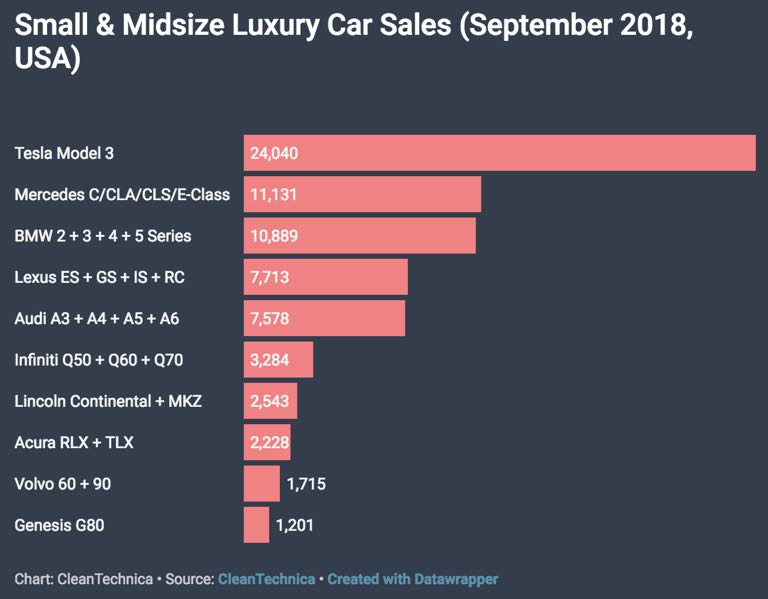
|
|
In the meantime, we took delivery of a new blue AWD Model 3 for my wife,
contributing to that awesome Q3.
What new adventures await?
Our family looks forward to the places this, no,
these electric cars can take us.
|
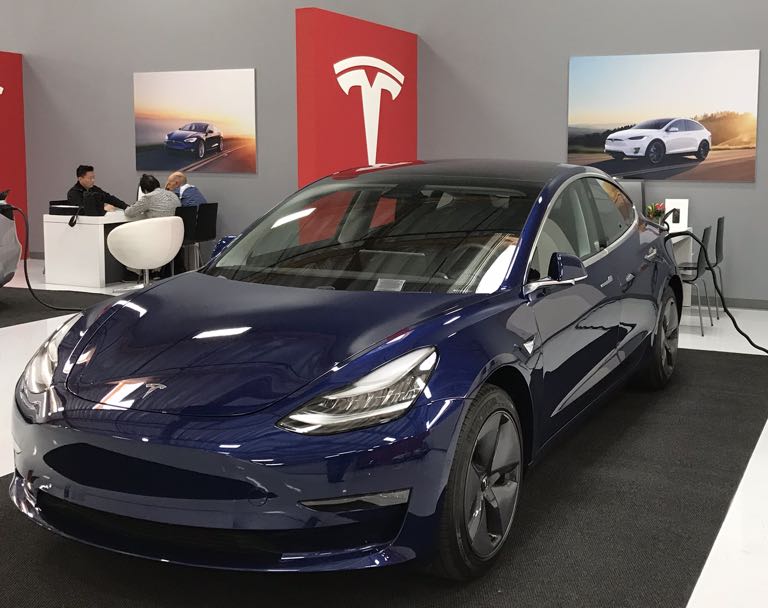
|
|
Epilogue - The Book
|
It took about year but I went through all our pictures and made a physical coffee-table book
chronicling our trip from more personal point of view for sharing with our family
and close friends. It turned out quite beautiful.
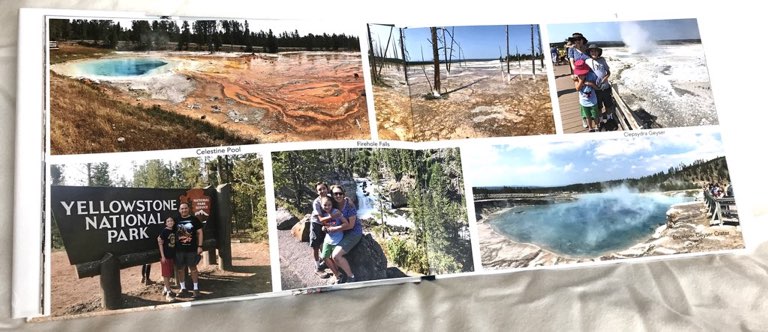
I carry another copy in my Model S, so if you encounter me out there,
maybe I can show you the places I've been using electricity.
|
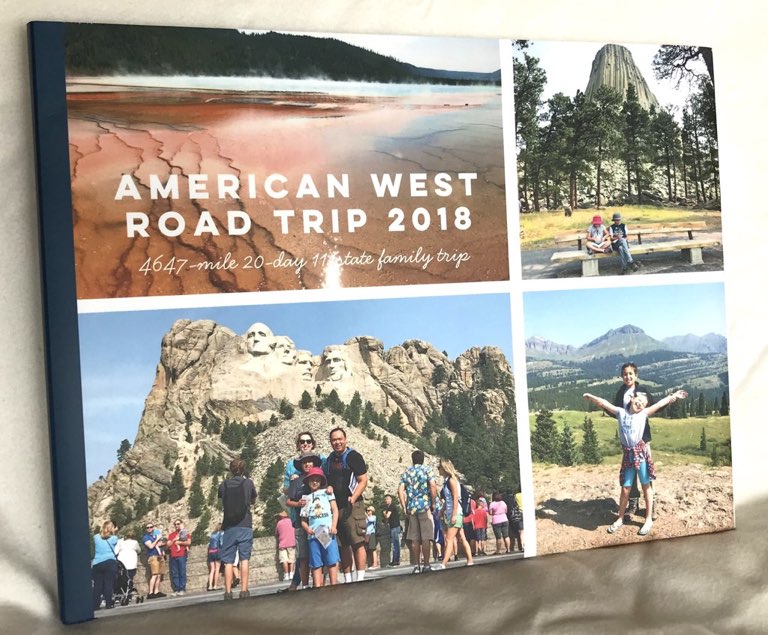
|
Dean E. Dauger holds a Ph. D. in physics from UCLA, where his group
created the first Mac cluster in 1998. Dr. Dauger is the award-winning
author in multiple American Institute of Physics' Software Contests and
co-authored the original, award-winning Kai's Power Tools
image-processing package for Adobe Photoshop.
After founding his company,
Dauger Research, Inc., its debut product,
Pooch, derived from Dr. Dauger's experience using clusters for his
physics research, was soon awarded as "most innovative" by IEEE Cluster
and continues to revolutionize parallel computing and clusters worldwide
with its patented technology.
|
Back to home
Thanks for having a look!
|




